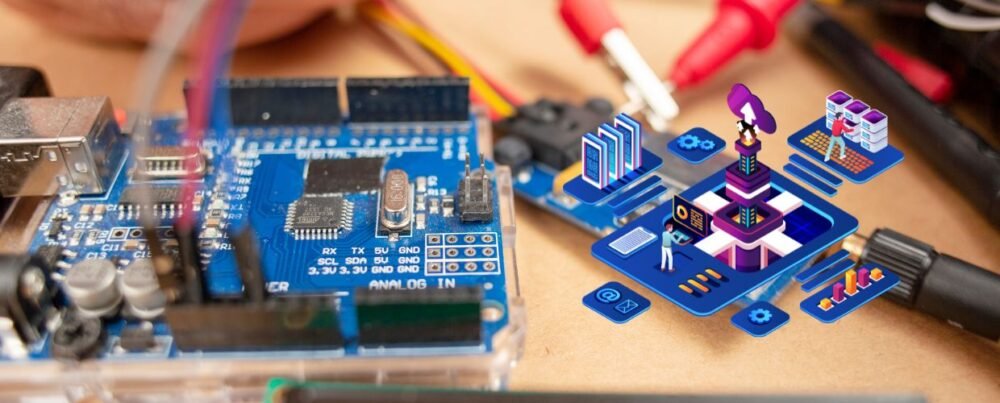A paradigm-shifting approach emerges in the intricate tapestry of technology, where hardware and software intersect—hardware-software co-design. In an age where seamless integration and optimal performance are paramount, this collaborative approach has the potential to revolutionize the way we develop and utilize technology. In this article, we delve into the compelling landscape of hardware-software co-design, its multidimensional impact, and its role in shaping the future of innovation.
Essence of Hardware-Software Co-design
Hardware and software have traditionally been treated as separate entities, each with its development cycle and considerations. However, the evolution of technology demands a more cohesive approach that recognizes the inherent interdependence between the two. Hardware-software co-design embodies this synergy, advocating for simultaneously optimizing both components to achieve enhanced functionality, efficiency, and performance.
Consider the development of a modern smartphone. The seamless interaction between hardware and software is essential for providing users with a smooth experience. From optimizing touchscreens to coordinating sensors and processors, hardware-software co-design ensures that the smartphone operates seamlessly, delivering the expected performance and capabilities. This integration elevates the device from a collection of components to a cohesive and user-centric tool.
Multidimensional Impact of Co-design
The impact of hardware-software co-design reaches far beyond mere performance enhancement—it opens doors to new frontiers of innovation. This approach enables the creation of previously deemed impractical or impossible devices. From wearable health devices that seamlessly monitor vital signs to autonomous vehicles that navigate complex environments, co-design is the catalyst that propels these innovations forward.
One area where hardware-software co-design excels is in artificial intelligence (AI) and machine learning (ML). As AI algorithms become more sophisticated, their execution demands a delicate balance between computation and memory access. Co-design allows for creating specialized hardware accelerators that cater to the specific needs of AI tasks, optimizing performance while conserving energy. This convergence of hardware and software propels AI from theory to practicality, enabling applications ranging from image recognition to natural language processing.
Unveiling the Dynamics of Co-design
At the heart of hardware-software co-design lies an intricate dance between engineers and developers. This partnership involves simultaneous consideration of hardware architecture and software algorithms. Hardware components are designed with specific functionalities in mind, while software is crafted to leverage the hardware’s strengths.
Consider the development of a gaming console. Co-design ensures that the console’s processor, graphics card, and memory are tailored to deliver an immersive gaming experience. Simultaneously, game developers write software that capitalizes on the console’s capabilities, pushing the boundaries of visual fidelity and gameplay mechanics. This dynamic collaboration fuels technological advancement, enabling innovations that captivate and engage users.
Challenges and Opportunities
While the promise of hardware-software co-design is alluring, it comes with challenges. The complexity of modern technology often requires interdisciplinary expertise, demanding seamless collaboration between hardware engineers, software developers, and domain experts. Ensuring that these diverse teams communicate effectively and understand each other’s intricacies is essential for the success of co-design projects.
Furthermore, the rapid pace of technological evolution presents both challenges and opportunities. On one hand, the convergence of hardware and software enables previously unthinkable innovations. On the other hand, it demands continuous learning and adaptation to keep up with emerging standards and technologies.
Co-design as a Catalyst for Innovation
As we peer into the horizon of technological progress, the vision becomes clear—hardware-software co-design is a catalyst for innovation that transcends traditional boundaries. Its impact across industries, from healthcare to automotive to entertainment, showcases its versatility and transformative potential. This approach streamlines development and fuels breakthroughs that shape our lives.
Imagine a future where smart cities seamlessly integrate hardware and software to optimize traffic flow, conserve energy, and enhance citizen experiences. Envision wearable devices that monitor health parameters with unprecedented accuracy, thanks to the synergistic optimization of sensors and algorithms. These possibilities are not distant dreams; they are tangible outcomes of a co-design approach that empowers us to redefine what’s possible.
Conclusion
In a world where technology is the canvas upon which we paint our dreams, hardware-software co-design is the brush that brings those dreams to life. Its ability to harmonize the strengths of hardware and software to optimize performance and innovation makes it a dynamic force that propels us toward a more interconnected and intelligent future.
As we continue to innovate and explore, let us embrace the transformative power of co-design. By blurring the lines between hardware and software, we unlock new dimensions of possibility and create solutions that resonate with humanity’s needs and aspirations. Through collaboration, dedication, and a commitment to excellence, we can orchestrate a harmonious symphony of engineering and creativity that shapes the technological landscape for future generations.












